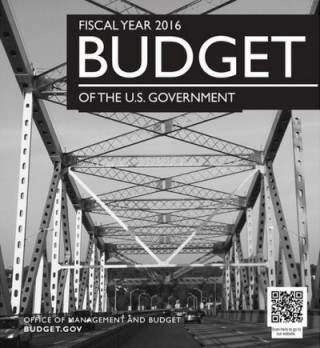
President Obama introduced a budget this week which, unlike last time, actually proposes a transportation funding mechanism—albeit a one-shot infusion of cash, not a permanent fix to a structural funding dilemma. Although the President’s plan is not expected to go far, the momentum does finally appear to be gathering, on both sides of the aisle, for a serious discussion about transportation funding.
Obama’s $4 trillion budget includes a six-year, $478 billion transportation program ($176 billion more than MAP-21, and $76 billion more than the $302 billion, four-year Grow America proposal introduced last year). It is partially funded by a mandatory 14 percent tax on U.S. companies’ profits (an estimated $2 trillion) currently parked overseas, resulting in $238 billion in revenue.
In 2016, $94.7 billion (nearly double the current amount) would be invested in roads, bridges, transit and freight. Highlights include:
- $51 billion in highway investment, up 25 percent
- $18.2 billion in transit investment, up 70 percent
- $1.25 billion for TIGER, up 250 percent
- $1 billion for a multi-modal freight program
- $10.2 million for the TOD planning grant program
- Establishment of passenger rail ($4.7 billion) and multi-modal accounts ($1.25 billion) in the Highway Trust Fund (HTF)
- Establishment of passenger rail and multi-modal accounts in the Highway Trust Fund (HTF)
- Renaming the Highway Trust Fund the “Transportation Trust Fund”
- A separate line item for Bus Rapid Transit
- Dedicated funding for “high-performance rail,” which would replace the concept of “high-speed rail”
- A national infrastructure bank
On the same day of Obama’s budget release, Transportation Secretary Anthony Foxx discussed the administration’s 30-year transportation plan—promisingly titled “Beyond Traffic 2045”— a policy framework that is all about “giving people choices.”
How to fund all these policy ideas is the discussion that the nation has been itching — and needing — to have. The Congressional Budget Office estimates a 10-year shortfall of $168 billion in the Highway Trust Fund, and the current law will expire on May 31 of this year, leading the HTF up to the brink of bankruptcy if there’s no action.
Legislators have been rushing to introduce their own ideas, including:
- A voluntary program to entice profit repatriation: In an odd-ball coupling, Senators Rand Paul (R-KY) and Barbara Boxer (D-CA) are planning to introduce their “Invest in Transportation Act,” which will give corporations an enticing tax rate of 6.5 percent on corporate earnings that are repatriated from abroad. Revenue yield is unclear, given that it is a voluntary program.
- A mandatory one-time tax: Congressmen John Delaney (D-MD) and Richard Hanna (R-NY) introduced their own “Infrastructure 2.0 Act” (HR 625), which would be a one-time, mandatory 8.75 percent tax on overseas profits, with an estimated yield of $120 billion.
- Raising the federal gas tax: Congressman Earl Blumenauer (D-OR) has reintroduced the “Update Act” HR 680, a bill which increases the federal tax on gas and diesel by 15 cents over the next 3 years, and after that, indexes the tax to inflation. Currently, the tax is 18.4 cents per gallon, so this additional road user fee would almost double the revenues.
- Drill and Drive: And another conservative funding proposal includes a revamp of the “drill and drive” variety.
The backlash on the proposed gas tax increase has been predictably strong. A sign-on letter from an influential posse of conservative think tanks and policy groups blames the HTF’s insolvency problems on “projects that have nothing to do with roads like bike paths and transit as well as completely unrelated projects like museums and squirrel sanctuaries.” [emphasis added]
But the arguments for an increase in the gas tax can’t be ignored. According to Rep. Blumenauer, “The average motorist is paying about half as much per mile as they did in 1993,” and according to Transportation for America, since 2012, 98 percent of the representatives who voted to raise revenues for transportation were re-elected. Additionally, one-shot proposals won’t permanently fix the structural funding imbalance.
That a serious, bipartisan conversation about transportation has begun is reason to be optimistic, but politics may ultimately get in the way of actual progress: Blumenauer’s bill has an impressive 23 co-sponsors, but all 23 are Democrats.

[…] For more about transportation in the president’s proposed budget, check out the New York Times, the U.S. Department of Transportation and Tri-State Transportation Campaign. […]
[…] $305 billion Fixing America’s Surface Transportation (FAST) Act. While a far cry from the $478 billion GROW AMERICA Act introduced by the president earlier this year, the bill is the first long-term surface […]